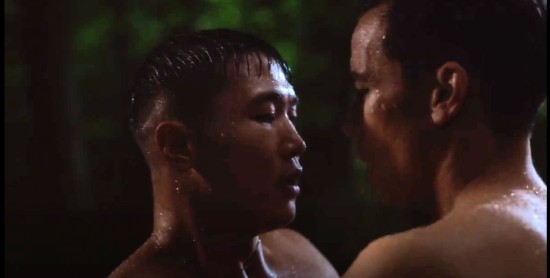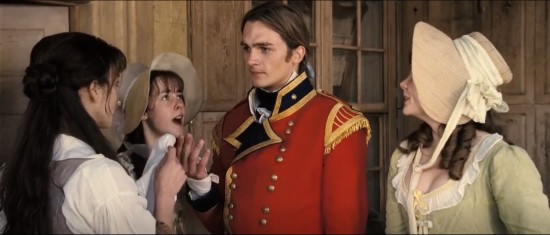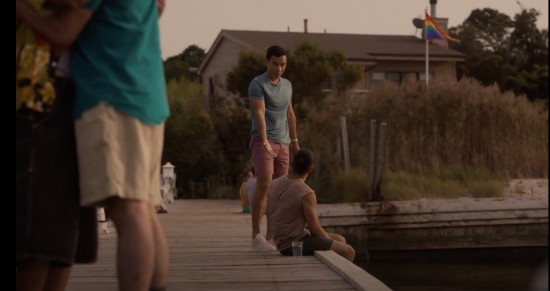In conduct books such as Sermons to Young Women (1766) and Addresses to Young Men (1777), James Fordyce, the eighteenth-century Scottish Presbyterian minister, preacher, poet, and philosopher, prescribed what we would call “gendered virtues.” Gendered virtues suggest that men and women have different inherent capacities—including different moral capacities. Widely published during Austen’s youth, by 1814 Sermons to Young Women was dispersed in “fourteen editions published in London alone” (Ford). While Fordyce compliments women, their manner, and their beauty, he situates their power and agency as existing only in relation to making themselves desirable to men and in creating a peaceful marital dynamic once they have husbands. Fordyce limits men’s agency in the realms of fashion and mannerisms by connecting male virtue and attractiveness to a narrow and sober masculinity. Sermons to Young Women and Addresses to Young Men serve as salient frames of reference for studying courtship dynamics and virtues not only in Austen’s Pride and Prejudice (1813) but also in contemporary adaptations like Andrew Ahn’s Fire Island (2022).
In his adaptation Fire Island, Andrew Ahn poses the question: what if Elizabeth and Darcy were gay men in the twenty-first century? How would an Austenian dynamic, one traditionally viewed as steeped in inherited gender roles and using the conventions of traditional, monogamist, and heteronormative romance, be translated across sexualities? Fire Island’s plotline follows Pride and Prejudice quite closely, albeit in more contemporary language and depictions. In his adaptation, Ahn satirizes the ideology of femmephobia—discrimination against femininely presenting gay individuals—by showing how they are considered less desirable and are commonly depicted as having much less depth and agency than their traditionally masculine-presenting counterparts. Further, Ahn’s adaptation turns on its head the monogamist romantic convention that permeates Austen’s novels by transforming Elizabeth Bennet’s character to Noah, a gay man with no plans to settle down with just one man.
Throughout their week on the isolated island, Howie, Noah, Max, Keegan, and Luke meet love interests and a Wickhamesque villain. The men attend a house party given by Charlie (the Charles Bingley analog), and while Howie (Jane) and Charlie hit it off, the enmity between Noah and Will (Elizabeth and Darcy) begins at Will’s overheard line “he’s not pretty enough to be annoying.” Dex, the Wickham analog, soon enters the scene. Hijinks ensue, as Noah hears only parts of both sides of a mysterious rivalry between Dex and Will, Dex citing Will’s disdain for his sex work, and Will simply saying that Noah should not believe everything Dex tells him.
At Charlie’s house party—Ahn’s combination of the Meryton assembly and the Netherfield ball—Noah overhears Will telling Charlie that Noah is not “pretty enough to be annoying.” The enmity between the Elizabeth and Darcy analogs begins here, as from this moment Noah decides that Will is a snob rather than the socially awkward and reserved man he really is. Another charged interaction occurs when Noah visits the next day and needles Will for drinking bottled water though the island’s water is perfectly drinkable. Will attempts to have the last word by pointedly throwing his bottle in the trash rather than recycling it. In a move as self-conscious as Matthew Macfadyen’s hand-flexing after helping Keira Knightley into a carriage in the 2005 Pride & Prejudice, after Noah leaves, Will gingerly removes his bottle from the trash and places it in the recycling bin.

Darcy (Matthew McFadyen) flexes his hand after handing Elizabeth Bennet (Kiera Knightley) into a carriage.
Pride & Prejudice © 2005 Universal Pictures.

Will places the water bottle in the recycling bin after Noah leaves.
Fire Island © 2022 Searchlight Pictures.
As in Pride and Prejudice, Charlie and Howie’s burgeoning relationship is cut short through machinations of Cooper (Caroline Bingley). In Austen’s novel, one of Elizabeth’s key reasons for animosity towards Darcy is that he persuaded Mr. Bingley to leave Jane due to her lack of connections and apparent lack of affection for him. In Ahn’s adaptation, however, although Noah accuses Will of dividing Howie and Charlie, Will is completely removed from blame in inviting Charlie’s ex to the island.
In a direct parody of the 2005 Pride & Prejudice, Darcy’s proposal to Elizabeth is transformed into a rainy run between Will and Noah after a party: after an argument, Will attempts to kiss Noah; Noah rebuffs him and runs off into the night. Paralleling Elizabeth’s time at Pemberley with Mr. Darcy and the Gardiners, Noah and Will spend a day together reading, competing in a dance competition at a drag bar, and getting to know each other. Wickham and Lydia’s elopement is transferred to a three-day sexual encounter between Dex and Luke involving a secret recording that Dex shares on social media. In this adaptation, both Will and Noah go after Dex, forcing him to remove the video from his social media. The film wraps up with Charlie asking Howie to date him while Noah and Will share a first kiss and talk about a future together without monogamy or labels.

Will (Conrad Ricamora) attempting to kiss Noah (Joel Kim Booster).
Fire Island © 2022 Searchlight Pictures
On male appearance and fashion
Fordyce’s Sermons to Young Women define what he proclaims to be moral and virtuous conduct for the sex. In highly sentimentalized prose adorned with many overblown compliments on female beauty, Fordyce analyzes biblical women and urges that women emulate them. Fordyce recommends that women dress modestly but well to attract a mate: “On this article your judgment will be seen in joining frugality and simplicity together; in being never fond of finery; in carefully distinguishing between what is glaring, and what is genteel; in preserving elegance with the plainest habit” (1: 73). By “plainest habit,” with its connotations of somber colors and a simple design, Fordyce suggests that women should strive for humble uniformity rather than garish or vulgar fashions in pursuit of originality. On the male side, Fordyce advises even greater restraint in the selection of garments, professing that any overt interest in fashion or adornment is detrimental to the man’s character, and that he will likely “make himself little, in the eyes of every man who is not himself effeminate, and of every woman too who is not a slave to fashion” (Addresses 60). Here begins what contemporary readers would identify as Fordyce’s homophobic undertones.
In Pride and Prejudice, by not describing male fashion, except for occasionally noting the color of a coat, Austen seems to align with the Fordycean ideal that men must dress simply to be attractively masculine in courtship. In fact, she seems to minimize the importance of fashion in courtship altogether—a stance staunchly, yet subtly, in opposition to Fordyce’s claims. To begin, the Bennet sisters spy the purportedly “good looking and gentlemanlike” Mr. Bingley (PP 10) and have “the advantage of ascertaining from an upper window, that he wore a blue coat” (9). According to Sarah Jane Downing, men in the Regency period could be generally divided between two fashion camps, those who wore more ostentatious colors and ornate fabrics, and those who adopted simple, more muted colors and patterns (Downing 102–10). The riding coat that Bingley wears became a staple of men’s fashion, especially under Beau Brummel’s influence. Brummel shifted Regency fashion away from brighter color combinations such as canary yellow and blue towards more sober tones but still allowed for male individuality in fashion choices. Brummel’s opinions and example transformed the male figure known as the dandy from “a decorated fop” to an “exemplary model of the modern man” (102). By steering fashion-conscious men away from bright colors and heavily adorned clothing, Brummel elevated the male fashionista to a simply elegant man. Austen subtly echoes this theme through the color palette she gives to Bingley in the scene described above, a sober blue. Indeed, Austen demonstrates a potential kinship with Fordyce’s ideals of dressing simply—though with her own adaptations and exceptions. She situates the male antagonists in the novel in the militia, dressed in flashy red coats. These soldiers are morally corrupt in courtship or, in the case of Colonel Foster, lackadaisical as chaperones, their flaws hidden at least for a time by bright uniforms.
Austen’s use of the militia is perhaps a subtle dig at the branch of the British military that, during the Regency era, saw less action than revelry. Austen intensifies the danger officers pose to young women, while refuting Fordyce’s claims that ostentatious colors like the red of their uniform coats will appear unattractive, with responses by girls and women like Mrs. Bennet: “‘I remember the time when I liked a red-coat myself very well—and, indeed, so I do still at my heart’” (PP 33). Undoubtedly these uniforms turn heads. When Lydia and Kitty learn of Mr. Collins’s imminent arrival at Longbourn, their reaction is uninterested: “It was next to impossible that their cousin should come in a scarlet coat, and it was now some weeks since they had received pleasure from the society of a man in any other colour” (71). The pleasure brought by men in bright colors, soon proves harrowing for Lydia (or at least for her family). Austen’s apprehensions surrounding militiamen, however, were due less to their fashion than to what their bright uniforms frequently concealed: “Readers see first that militia officers are poor officers, . . . are morally insensitive, . . . and are unreliable romantic partners who may exploit impressionable young women” (Fulford 169).

Wickham in his militia uniform.
Pride & Prejudice © 2005 Universal Pictures
The only other red-coated gentleman in Pride and Prejudice, though he is an officer in the army Regulars rather than the militia, is Colonel Fitzwilliam. Austen outlines his romantic prudent (or mercenary) tendencies, while balancing them with what we see of his character: Colonel Fitzwilliam protests that “‘[y]ounger sons cannot marry where they like’” (205). Elizabeth weighs him against George Wickham—a similar yet, as we discover, less morally sound romantic mercenary: “she believed [Colonel Fitzwilliam] might have the best informed mind” (202).
Meanwhile, the flighty, yet morally sound Bingley wears a sober blue, not wholly unlike the uniforms most likely worn by Austen’s own naval brothers at one time or another. Even Lydia herself muses on the more distinguished attractiveness of blue versus red for marriage: “‘I longed to know whether he would be married in his blue coat’” (352). Further evidence of Austen’s devaluation of fashion versus character is clear: Pride and Prejudice she uses diction relating to morals, character, and mind, over three times more than words like “dress” and “coat.” A masculine or elegant appearance should rank far below an agreeable manner combined with genuine goodness.
Fire Island (2022) offers a revolutionary take on Austen’s plotline and characterizations, it shares some remarkably pointed similarities with Fordycean reasoning. Fordyce’s focus on the need to avoid the male “dandy” is reflected in the film. Noah’s voiceover describes the metrics for attraction in gay hookups on Fire Island: “No fats, no fems, no Asians” (Fire Island). By “fem” Noah refers to gay men who dress more femininely—for example, wearing tight-fitting shorts, crop tops, sparkles, makeup—and who have gentler or more traditionally feminine mannerisms. Similarly, Fordyce ties desirable masculinity to avoiding dandyish or effeminate patterns of dress and conduct.

Noah, Max, Howie, Luke, and Keegan on the Ferry to Fire Island.
Fire Island © 2022 Searchlight Pictures
From the very first moments of the film, there is a clear dichotomy between some of the gay men who present as more traditionally masculine—i.e., exhibiting rippling muscles, speaking in lower-pitched voices, displaying loud and unapologetic self-confidence—and those who present more femininely, dressing in more flamboyant and colorful clothing and speaking and gesturing with daintier manners and tones. Coincidentally, the more feminine men—notably Howie, Luke, and Keegan—are frequently slighted by the rest of the gay male hookup-questing population. In the film, Ahn demonstrates that the “toxic body standards,” of gay communities like Fire Island are alarmingly like the rigid Fordycean-style ideals for men’s Regency-era fashion. The men who do not act and dress masculinely or dominantly tend to be belittled or ignored.
To get this point across, Ahn’s Howie, the stand-in for Austen’s most beautiful Bennet sister, is less stereotypically attractive than Noah: Howie is much less muscular and much more feminine in mannerisms than Noah’s character. Howie remarks that even on Fire Island he feels “terminally alone,” demonstrating just how rigidly these rules of attraction are generally followed in gay hook-up culture, no matter how sweet a man might be. Howie’s statement highlights the kind of real-world views and examples of femmephobia in the contemporary gay community that contemporary gender theorist David Halperin explores.
Shattering binaries
Fordyce particularly cautions against the witty woman in courtship, citing wit as “the dangerous talent” that can be “well compared to the dancing of a meteor, that blazes, allures, and misleads” (Sermons 1: 189). The use of intelligence for attention is particularly against Fordyce’s recommendations for both sexes, but especially for women. Fordyce casts wit as a tool to be used but sparingly. Women are meant to provide a place of ease for men who lack ease in their relationships with their male friends: “[w]here the heart may not expand and open itself with freedom, farewell to real friendship, farewell to convivial delight! But to suffer this restraint at home, what misery!” (1: 148). In Addresses to Young Men, however, Fordyce states that for men seeking friendship with other men “if his mind is not exactly attuned to yours, it is impossible that you and he should unite in the finer accords of life: and yet with some other minds he may blend in a beautiful harmony” (173). Fordyce sees men as inherently incompatible on an emotional level with those of divergent opinions, literally situating men as antagonists to each other and erasing the possibility of fraternal connections (let alone romantic ones) in the face of difference. In Pride and Prejudice, Austen uses Elizabeth Bennet and Fitzwilliam Darcy’s interactions to posit that intellectual competition between potential romantic partners can attract rather than repel, implicitly disagreeing with Fordyce’s strictures.
Austen, through characterizations of courtship both successful and unsuccessful, shows the follies of this binary of wit against female passivity in preserving male “ease.” She presents both Fordycean and non-Fordycean extremes in terms of courtship dynamics. Perhaps the most Fordycean example is Mr. Collins. He flatters all the Bennet sisters and even attempts to read Fordyce’s Sermons to them. Throughout the novel he parrots Fordycean language, frequently asserting gendered virtues through the terms “female character” and “sex” to make grandiose generalizations about female conduct. He notably tells Elizabeth, “‘I know it to be the established custom of your sex to reject a man on the first application’” (121). Elizabeth immediately rejects this Fordycean praise of an “‘elegant female’” and instead asks to be considered a “‘rational creature’” (122). Through this request, Austen indicates both the insipidity and stupidity of caging men and women in the framework of gendered virtues.
Darcy conducts his courtship in a decidedly non-Fordycean manner, as in his first proposal to Elizabeth he not only clearly indicates his disdain and even disgust with her family’s conduct but also cites her “‘inferiority’” and says that “‘he had found [it] impossible to conquer’” his feelings for her (211–12). Here, Darcy ignores the Fordycean ideal of women as superior moralizing agents (Harrrington 42) as well as the necessity and rightness of flattering them. Although not mentioning Fordyce, Monica Alvarez argues that for readers and audiences, these on-page and on-screen deviations from such expectations and values are responsible for Darcy’s draw as a character: Darcy’s character should be “defined as the embodiment of masculinity allied to and invested in female empowerment.” Austen constructs a Darcy, Alvarez contends, whose masculinity and character are rooted in “female needs.” Darcy does not pander to Elizabeth as Mr. Collins attempts to do; he speaks to her almost too rationally and transparently, as is seen in his insulting proposal. Alvarez aptly crystallizes what makes Austen’s depiction of Darcy and Elizabeth’s courtship so decidedly non-Fordycean: that instead of a woman made and formed to care for men, here is a man who ultimately comes to believe that men should instead reflect qualities and traits that are agreeable to women and advantageous to women’s happiness.
Rather than being repulsed by Elizabeth’s wit, as Fordyce would forecast, Darcy is attracted by Elizabeth’s dominant conversation style and soon finds her “rendered uncommonly intelligent by the beautiful expression of her dark eyes” (26). He finds her playful manner and intelligence enchanting beyond the physical trappings of dress or other Fordycean feminine virtues. Further, Austen’s view of wit is complex: Caroline Bingley also has a sharp tongue, yet Darcy parses her shallow and mean-spirited treatment of those around her, understanding her as inferior to Elizabeth.
Meanwhile, Austen gives Darcy some qualities of the Fordycean female. He is, at times, much more modest and prudent than Elizabeth herself. Unlike the charismatic George Wickham, and even the witty Elizabeth Bennet, Darcy does not attempt to dazzle his admirers and public audiences. Rather, during the Netherfield ball, Elizabeth is forced to make up for his lack of conversational tendencies while dancing: “They stood for some time without speaking a word; and she began to imagine that their silence was to last through the two dances, and at first was resolved not to break it; till suddenly fancying that it would be the greater punishment to her partner to oblige him to talk, she made some slight observation on the dance” (102). Here, Darcy exhibits the Fordycean-female extreme of modesty by naturally avoiding behavior that would make him stand out. Meanwhile, Elizabeth exhibits exactly the sort of dazzling wit that Fordyce abhors. This wit entices Darcy from his silence, as is seen during their dance at Netherfield. Despite what Fordyce would undoubtedly prescribe as a mismatch of gendered virtues, their prickly yet charged witty repartee serves as a further attracting force between their characters.
In the courtship of Jane Bennet and Charles Bingley, Austen represents the potential dangers of a Fordycean-characterized woman attached to a man who displays Fordycean-female traits. Jane is a mirror of the classic Fordycean woman, practically formulated from the chaste and gentle woman from the Book of Proverbs from whom Fordyce takes his inspiration. In every interaction with Mr. Bingley, she acts modestly and meekly and with an incredible degree of self-command. Bingley, however, is also quite meek, and his pliability proves to be responsible for his narrowly averted downfall, as through it he is separated from Jane. Yet, by the end of the novel, Bingley and Jane’s union is described as the “‘happiest, wisest, most reasonable end’” (384). Bingley’s most attractive traits to Darcy, according to Austen’s narrator, are his “easiness, openness, and ductility of his temper” (17). Through the relationship between Bingley and Darcy, Austen subtly counters Fordyce’s idea that men of opposing natures or competing intellects cannot be friends. Austen describes these two as having “a very steady friendship, in spite of a great opposition of character” (17). Fire Island augments this difference in character and underscores Austen’s hypothesis that some opposites attract. Further, through the example of the five friends, the film demonstrates that men can form strong attachments to each other without a female buffer.
Nostalgia and the road to romance
Fordyce’s Sermons, Austen’s Pride and Prejudice, and Ahn’s Fire Island all, to some degree, depend on the device of literary or cultural nostalgia and its efficacy—or lack of efficacy—in courtship. In Sermons to Young Women, Fordyce builds a model of male virtue by reminding his readers of the style of the “Old Romance,” wherein men can emulate heroes who were “sincere, magnanimous, and noble” (1: 150). His female archetype is rooted in the biblical Book of Proverbs, described as possessing “modesty, meekness, prudence, [and] piety” (Ford). Through these two archetypes, the graceful and accomplished familial servant and mother and the generous and noble gentleman who will be tamed by such an angel, Fordyce frames his case for the gendered virtues of English heterosexual courtship in the eighteenth and nineteenth centuries. In the romances and biblical sources that Fordyce cites, these archetypes frequently achieve marital and spiritual happiness.
In Volume 1, chapter 9, Darcy and Elizabeth debate the use of poetry in encouraging or discouraging romance. Elizabeth says, “‘I wonder who first discovered the efficacy of poetry in driving away love!”’ while Darcy replies in an allusion to Shakespeare’s Twelfth Night, “‘I have been used to consider poetry as the food of love”’ (49). Elizabeth returns that “‘Of a fine, stout, healthy love it may. Every thing nourishes what is strong already. But if it be only a slight, thin sort of inclination, I am convinced that one good sonnet will starve it entirely away’” (49). Here, Austen posits through Lizzy Bennet’s example that not all modern women will be swayed by pretty words crafted through restrictive historical poetic forms like the English sonnet; the nostalgic use of poetry to forward romance is not effective without action. Austen suggests that the relationship between the literary nostalgia and courtship that Fordyce recommends can be detrimental to forming a strong attachment and that the Fordycean ideal of emulating the heroes and heroines of “Old Romance” is restrictive.
While Austen aptly counteracts the idea of Fordycean gendered virtues perpetuated by cultural and literary nostalgia in Regency era courtship and marriage, she leaves room for further revolution in and expansion of courtship dynamics. Examples of these (understandably) missed opportunities include interracial relationships or any courtships outside of the heterosexual binary scale. Saliently, Claudia L. Johnson muses that predecessors to Austen’s works such as Wollstonecraft and Radcliffe present “emancipatory possibilities that Austen rarely attempts: resistances to the uncomfortably overladen heterosexual spousal or parental plot, and vergings onto homosocial and homoerotic narrative that bypass male sentimentality” (19). When heterosexuality, marriage, and monogamy are no longer understood as absolutes in courtship dynamics, as in Ahn’s Fire Island, adaptation can create an accessible and inclusive route to the appreciation of the original work and the courtship dynamics within it.
Ahn’s emphasis on non-monogamy in Will and Noah’s relationship is a stark rejection of Fordyce’s gendering theories, and an extension of the gender-transgressing dynamics of Pride and Prejudice. The trajectory of Noah and Will’s relationship is left decidedly open, allowing for Noah’s self-professed love of freedom, presumably even after he embarks on a romantic partnership with Will. This desire is less for economic and physical freedom than for the freedom to define love in one’s own terms. In the Regency era, such freedom was simply not publicly possible for any individual, due to boundaries of sex, property, propriety, or race. On Ahn’s idealized, gay paradise island, romantic partnerships that expand or defy heteronormative and monogamous restrictions are possible. Further, he rejects the Fordycean claim that romantic happiness and success necessitate both a female and male component.

After they reject relationship labels and monogamy, Will (Conrad Ricamora) asks Noah (Joel Kim Booster) to dance.
Fire Island © 2022 Searchlight Pictures
Fire Island takes on not only nostalgic visions of relationship but also the popular media’s perpetuation of claims that only certain courtship or relationship patterns are successful. In 1985, investigators Lawrence Kurdek and J. Patrick Schmitt found that “partners in open and closed gay relationships were equivalent in intimacy, security, satisfaction, and commitment” (88). In 2006, Barry Adam investigated the innovation of male-male couplings and the organization of their courtship dynamics, finding that ‘‘[n]on-monogamy is not an indicator of relationship failure among gay men” (8). Fire Island directly addresses and interrogates these claims as Noah pronounces his anti-monogamist views while his best friend Howie wishes for “the romance bullshit.” Through this dichotomy, Ahn refutes the idea that gay male relationships and dynamics must either take on a script of sexual promiscuity or follow a monogamous heterosexual pattern. He shows that homosexual male relationships can vary in degrees of happiness and longevity just as much as heterosexual ones do. Fire Island’s radical challenging of gendered virtues and binary relationships through its depiction of heterosexual and monoracial courtships raises the question of what other courtship dynamics could be revolutionized or expanded upon in adaptations of Austen’s works.
![]()
In Fire Island Ahn exchanges Austen’s economic conundrum used as a limiting factor to the courtship dynamics of the Bennet sisters for a more modern, visceral factor: the shunning of gay men, even within their own society, due to their gender expressions, fashion choices, and mannerisms. Ahn suggests through this adaptation of Austen’s novel that although values and expectations surrounding courtships and romances have been transformed in liberating ways, underneath they still retain unexpected elements of discrimination and prejudice. Why should a gay man feel “terminally alone” on what, in the film, is classified as “gay Disney world”? And why should he be stigmatized for not subscribing to monogamous relationships? The film’s polychromatic depiction of gay men and their happiness in monogamous, polygamous, and even platonic dynamics removes the necessity of marriage or even that elusive concept of “ease.” Or, perhaps more saliently, Ahn attaches “ease” to a more flexible, fluid, and empowering happily-ever-after than gaining the view, marriage, and consequence afforded by Austen’s Pemberley. Ahn posits through his adaptation that for a Pride and Prejudice set in a homonormative society, Pemberley might in fact be simply the freedom to remain oneself—scintillating, sharp, and crass as Noah begins and remains throughout the film.
